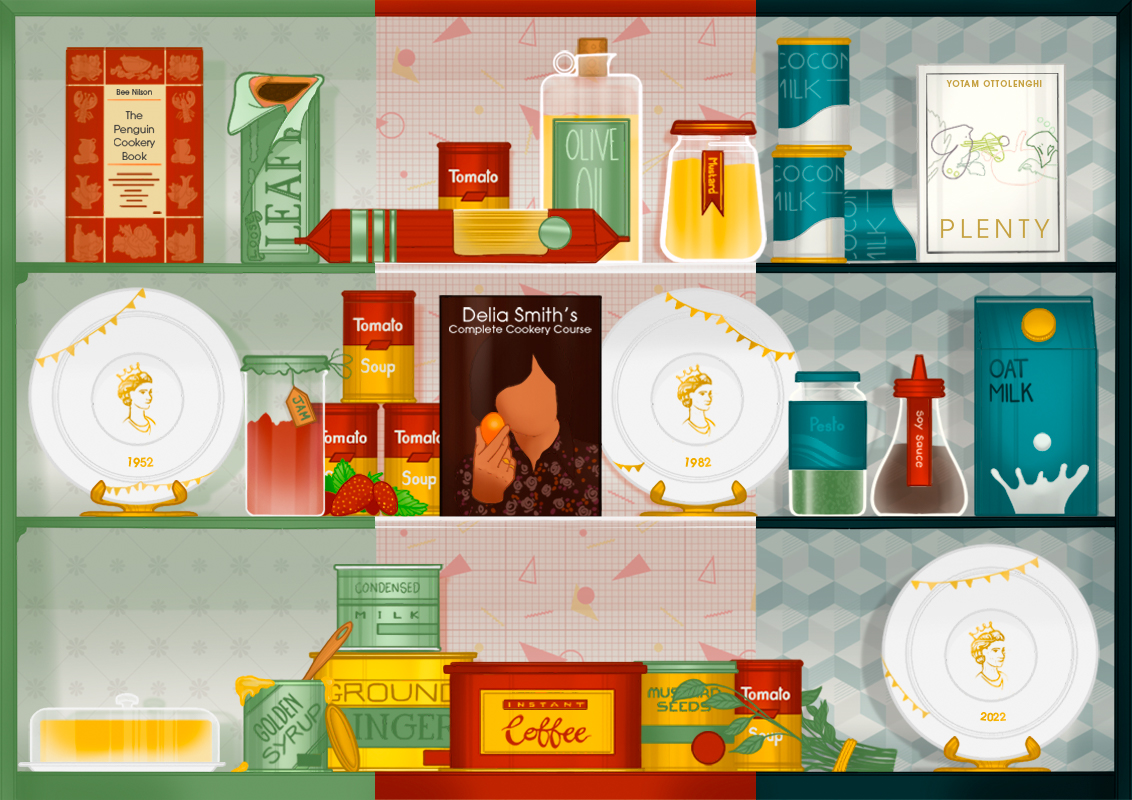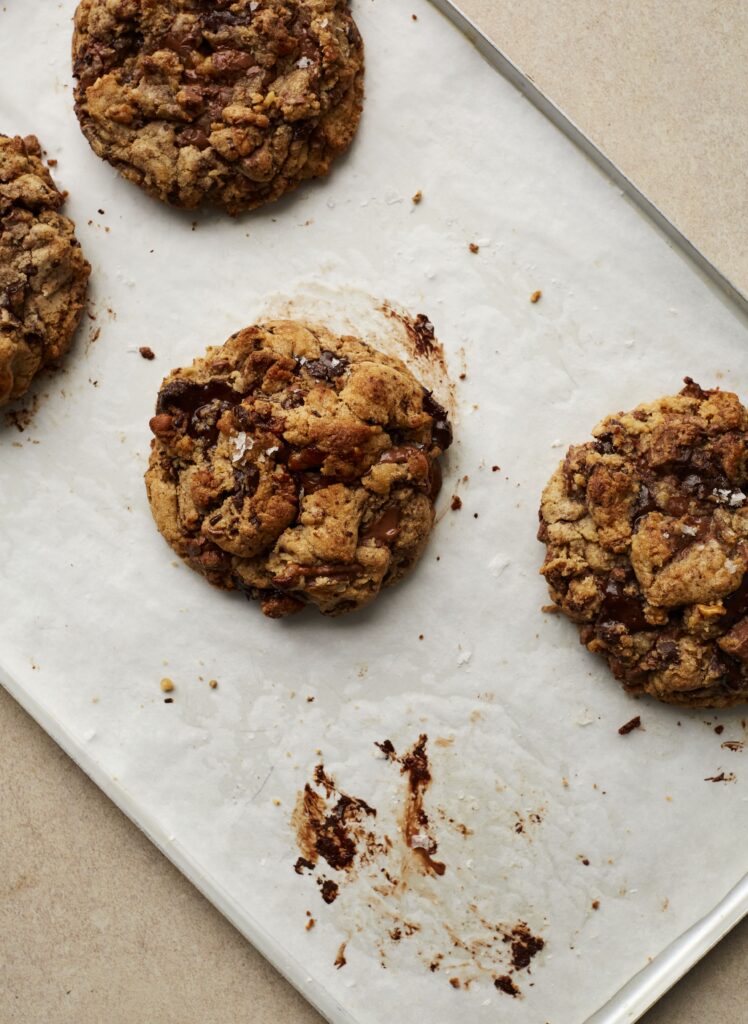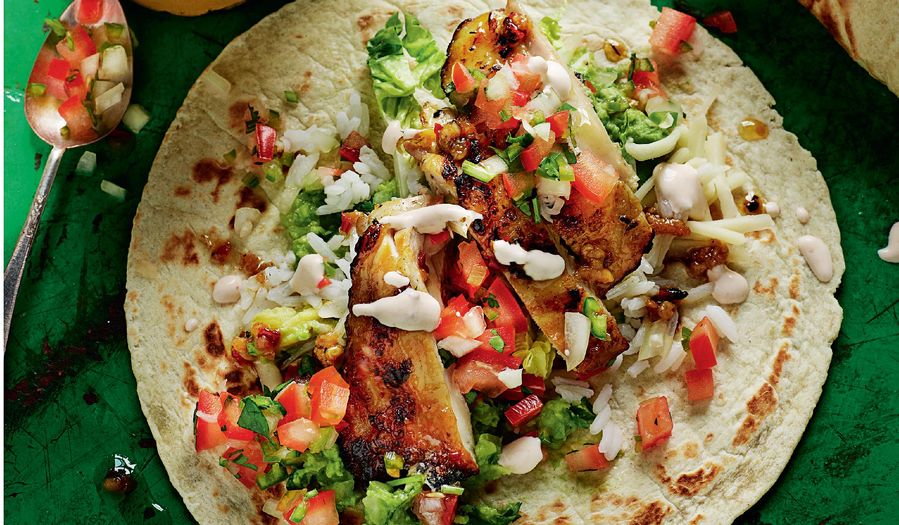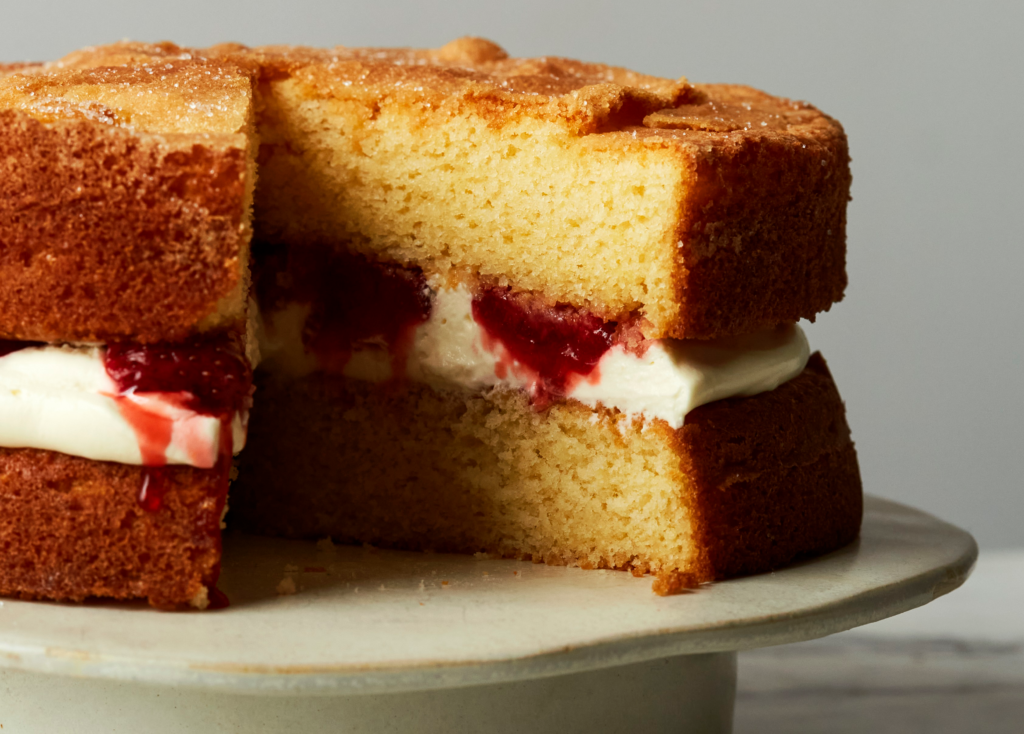2022 marks 70 years since Queen Elizabeth II took the throne. To mark the occasion, Malou Herkes takes a look through pantries, talks to home cooks and delves into Penguin Random House’s back-catalogue of cookbooks to see how attitudes to food and cooking have changed over the last seven decades.

The 1950s and 1960s
In 1952, the year Queen Elizabeth II became its reigning monarch, the United Kingdom was emerging from the austere years of food shortages following the Second World War. After fourteen years of harsh thrift, British cooks had learned to be ingenious at stretching their limited pantries, relying on seasonal produce and making sure nothing went to waste. “Mum was a great cook. Her dishes were low on meat and high on carbohydrates, with sides of home-grown vegetables as the good post-war housewife that she was”, home cook Sylvia recalls of her mum who grew up in Walthamstow, London. “There was lamb – breast if we were short on funds and shoulder in better times – carefully sliced by my father and made to last several days. The leftovers, layered with onions, tomatoes and gravy and baked in the oven, were weirdly delicious.”
For some, it was a time of newfound prosperity. More people could afford fridges and electric cookers, and industrialisation made food cheaper. When Bee Nilson’s Penguin Cookery Book was first published in the same year, women were also working increasingly out of the home, all while doing the cooking, cleaning and childcare. “This is a general cookery book designed for the busy woman who wants to serve good food, but only has limited time in the kitchen”, Nilson writes in her book, prefacing a combination of traditional British and European dishes and chapters dedicated to ‘Offal and Sundries’, ‘Jellies and Aspic’ and a full two pages dedicated to French cooking terms.
The 1960s heralded the arrival of lavishly illustrated cookbooks with artfully decorated feasts for weekend entertaining. Imagine recipes like Salmon Bisque and Moulded Asparagus Salad formed into lurid, un-food-like shapes. These cookbooks were symbols of a new postwar nation, promising plenty and progress, a chance to dream of a lifestyle far removed from the restrictions of previous decades.
Convenience foods were on the up and for the rising middle classes, were a sign of luxury. “My first efforts at cooking were to open a tin of soup and a tin of baked beans and combine them. I called it STEWP”, home cook Chrys laughs, recounting her intro to cooking in 1960s Southport. “Everyone had struggled and suddenly convenience foods came in. I remember jars of cheese paste to make cheese on toast. It wasn’t really more convenient but convenience was for those with money”.
Amid the din of TV jingles, the suck of jelly moulds and tins opening, Elizabeth David’s voice began to be heard. She transformed notions of French cuisine from overly complex “oceans of wine and cream” to food with a focus on simple, seasonal ingredients. “There is one mistake we nearly all make when first attempting French cookery. We make it too complicated” she writes in her French Provincial Cooking, published in 1960. While access to the ingredients she spoke of remained limited, David’s books signalled the beginning of a change in attitudes to food ‘on the continent’ and a shift away from traditional cooking.
In 1968, Claudia Roden published her meticulously researched A Book of Middle Eastern Food, and would go on to become one of the most influential voices in food. Roden introduced a wider audience to Middle Eastern flavours and ingredients that are now considered staples in British pantries.
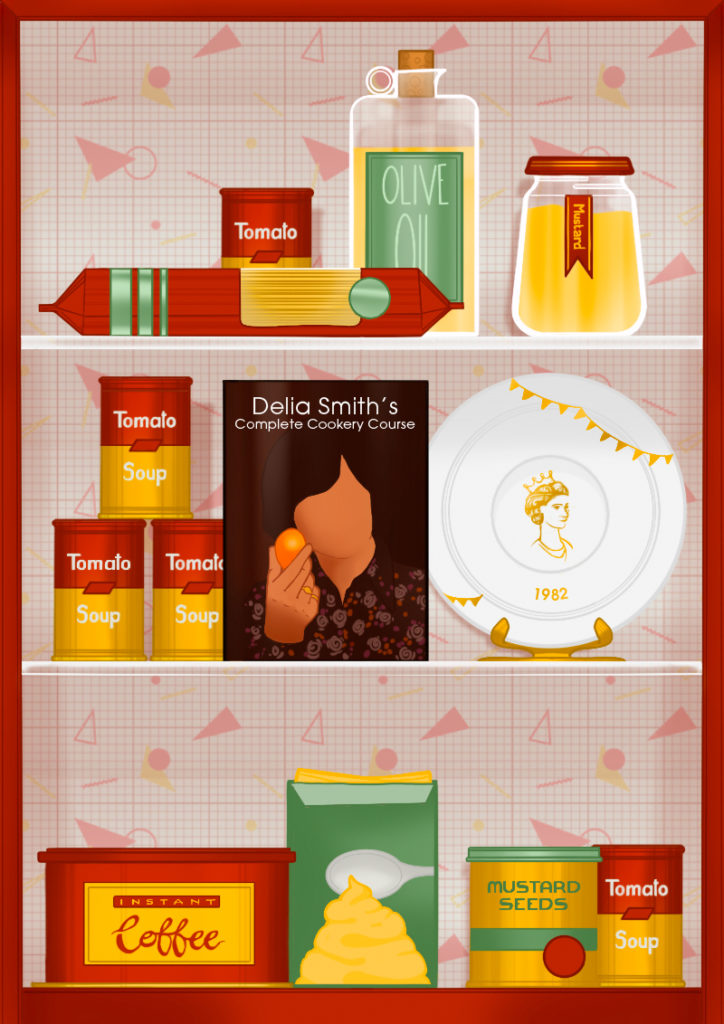
The 1970s and 1980s
Come the 1970s, British curiosity for new flavours and a greater disposable income saw more people eating out. “French restaurants were expensive, but Greek, Indian and Chinese restaurants were more affordable”, my own mum recalls when she moved from France to London in 1975. This curiosity for new flavours didn’t yet translate into easy access to ingredients. “The wine was terrible, you could only get olive oil in chemists and there was no French mustard”.
Home cook Harvindar moved with her Punjabi parents from Singapore to 1970s Southall: “I remember when an ingenious Indian man started importing spices. His business, Gifto, is still in Southall. Mum used his spices to make her own masalas, drying them in a wide wicker basket in the sun, which she’d grind in her spice grinder. She’d use her masalas to cook with British produce. Remember, you couldn’t really get aubergines and the only time you could was in tins”.
By the 1980s, the Curry House, heavily adapted to white British tastes, had become an institution in towns across the UK. It was in this climate that Madhur Jaffrey’s Indian Cookery was made into a TV show. It was the first book about Indian food by an Indian author to reach a mass audience in the UK, selling hundreds of thousands of copies and showing there was more to Indian food than korma, tikka masala and madras.
By now, people were enjoying easier access to a variety of ingredients, albeit limited by today’s standards. While refrigeration made it easier to transport fresh produce from far away, those migrating to the UK were setting up shops selling imported foods from their home countries. Georgina Hayden, author of Taverna: Recipes from a Cypriot Kitchen, had grandparents who did just that in London: “My grandad worked in a Wall’s sausage factory and worked so hard his boss lent him the money to open the deli. They stocked all the produce they couldn’t easily get hold of. Olives, olive oil, halloumi, all the Cypriot meats and cheeses”.
Nevertheless, an over-reliance on convenience foods had not been kind to a generation of home cooks. Unlike Harvindar, who learned to cook from her mum (“It wasn’t a question of choice!”), my own mum hadn’t, and like many children of the 1960s, turned to Delia Smith. Delia’s Complete Cookery Course included all the traditional basics from classic roasts to shortcrust pastry. For my French-British mum and many others, dinner was an eclectic mix of traditional English classics, as well as recipes, flavours and ingredients she’d grown up with. Georgina Hayden remembers something similar of her own mum: “Food growing up was very Cypriot. Mum was also a really adventurous cook to be fair. She would always bake, made proper roasts and tried to do all the English classics. I even remember the electric carving knife, so eighties! There was chicken Kyiv and pizza but mum would always make Cypriot salads and proper sides too.”
1990s and 2000s
Delia was one of few women in the male-dominated world of celebrity TV chefs and by the 1990s her TV shows had garnered a mass following. Later coined The Delia Effect, Delia’s mere mention of lemon zesters, sun-dried tomatoes or fresh herbs had people scouring shops in search of them. Supermarkets started to pay close attention. Taking up the baton from Elizabeth David, Delia made mainstream what Elizabeth had started, with recipes for ‘Mediterranean’ stuffed peppers and chicken traybakes with Spanish olives and white wine.
The late 90s saw the arrival of two new voices that would go on to revolutionise home cooking for generations. Nigella Lawson’s How to Eat was published in 1998, launching an illustrious career that now includes fourteen cookbooks. Nigella’s reassuringly simple recipes delivered invariably delicious results and reminded cooks to connect to the sensory joy of cooking. Jamie Oliver’s groundbreaking The Naked Chef, published soon after in 1999, with an accompanying TV series. Like Delia, he was writing for an audience who couldn’t cook. But this time, for men: “When I first started out not many men seemed to be engaged in cooking but in no time at all, I had blokes from all over the country say that I’d inspired them to get stuck in”, he wrote in the re-edition of his first cookbook, which went on to sell three million copies worldwide. Jamie’s laid-back ‘chuck it all in’ approach made everyday cooking accessible to a whole new audience and he made it look fun too. Suddenly, shopping local and cooking with British-grown seasonal produce seemed like a cool thing to do.
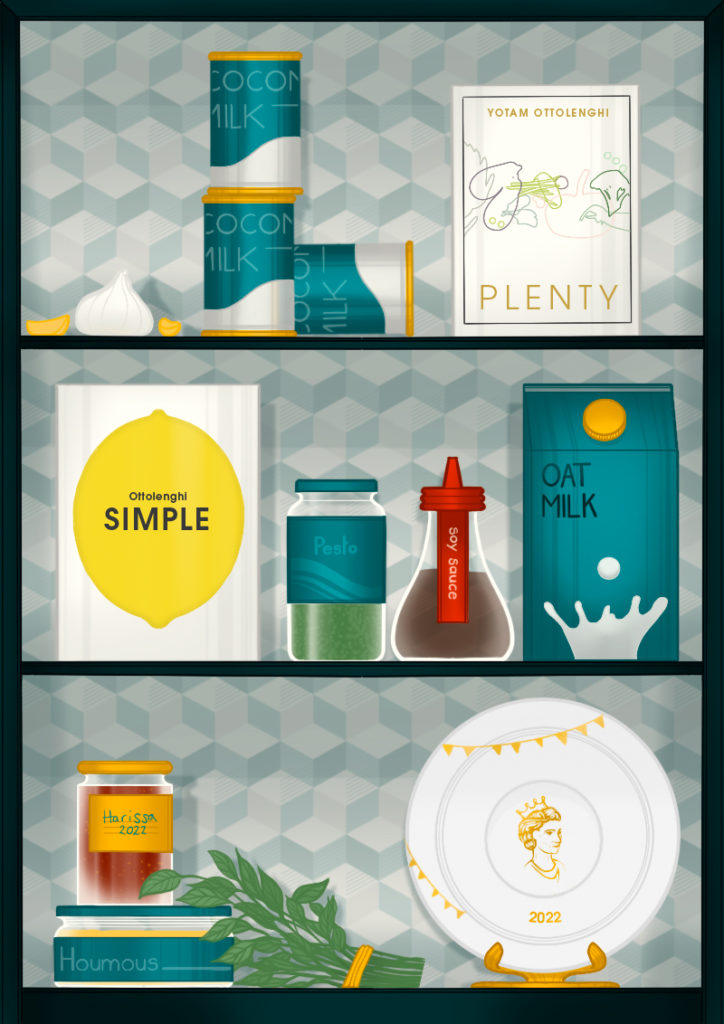
2010 – today
Touted as a more ethical, planet-friendly way to eat, hordes of cooks began turning to vegetarian, vegan and flexitarian diets, helped in part by a new wave of chefs making vegetables the star of the show. Yotam Ottolenghi’s Plenty came out in 2010, showcasing veg-centric recipes and building on Claudia Roden’s legacy to broaden appreciation for Middle Eastern flavours and ingredients. If the 1990s were defined by The Delia Effect, the 2010s saw increasing numbers of home cooks go on the hunt for ‘Ottolenghi ingredients’, from za’atar to sumac, tahini to harissa. Seven cookbooks later and Ottolenghi continues to keep supermarket buyers on their toes, introducing new must-have ingredients with every new release.
By the late 2010s, Bake Off was on our screens (bringing with it a generation of new cookbook authors, from Nadiya Hussain to Candice Brown, Edd Kimber to Benjamina Ebuehi), Rukmini Iyer’s one-dish dinners were in the oven, food blogging had taken off and previously unheard voices began sharing their recipes on Instagram and YouTube. The internet democratised who could share recipes and who could access them.
Rachel Ama launched her YouTube channel in 2017, cooking simple vegan recipes inspired by her West African, Caribbean and Welsh roots. Eighteen months and 180,000 subscribers later, she wrote Vegan Eats showing that plant-based meals could be easy to make, comforting and delicious, and far from a ‘new’ Western concept. As Riaz Phillips writes in his forthcoming cookbook West Winds: Recipes, history and tales from Jamaica: “before the word vegan became mainstream in food cultures across the world, the Rastafari equivalent ‘Ital’ (derived from the word vitality) is a way of eating and living that has been cultivated in this corner of the world for nearly a century”.
As a global pandemic shut the world down, more people got in the kitchen and – digitally at least – cooked banana bread together. Cue the rise of TikTok and relaxed cooking videos, viral hashtags for 3-ingredient recipes, and real home cooks cooking from their everyday pantries without the polished perfection of Insta. From potatoes to Korean recipes to cheesecakes, there’s a specialised TikTok account for everything.
As we roll through another decade, British food writing and cookbooks are becoming more exciting than ever, reflecting hyper-regional, hyper-specific ways of cooking demonstrative of a more diverse spectrum of kitchens. What will we be cooking in the coming decades? Well, that’s anyone’s guess.

